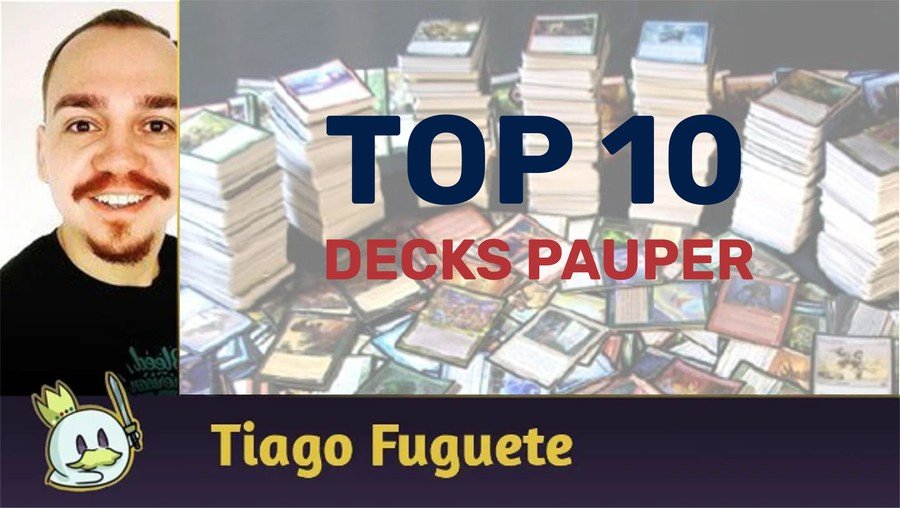Last Tuesday, Wizards of the Coast announced a changes for Magic: The Gathering's banned & restricted announcements schedule.
Among them, three points stand out: the move to a major annual banned and restricted update, new banned updates three weeks after each set release for punctual fixes across competitive formats, and the announcement that we will have a change to Standard's banned and restricted cards on May 29.
In this article, we'll cover the impact these changes might have on both Standard and Eternal formats.
Yearly bans are a good opportunity to shake up the Metagame
The above statement is met with both excitement and fear, depending on how players adapt to new cards and decks over the course of a year, or how stable your favorite format's Metagame tends to be.
Bans to stir up the competitive environment and bring innovation aren't a new thing. In a historical context, cards like Splinter Twin were banned from Modern for this reason, as well as other pieces that, despite not dominating their respective formats, left their formats for new strategies to emerge.
Therefore, this annual announcement will be Magic's most important from the end of August, as it can create the necessary maintenance to feed diversity in competitive formats, including non-rotating ones, such as Pioneer, Modern and Legacy - Pauper may have changes in this period, but Emma Partlow, from the PFP, has already stated on Twitter that the panel will have its autonomy to act as necessary.

This annual maintenance would have the greatest potential for banning, or unbanning, cards to adapt the Metagame across all formats. For example, a ban on Ragavan, Nimble Pilferer and Teferi, Time Raveler in Modern would be a huge git on the format's main decks, just as if they removed Urza's Saga. The same would happen if they decided to unban other cards, such as Splinter Twin or Faithless Looting.
Something similar could happen with the other eternal formats. A ban on Fable of the Mirror-Breaker or Esika's Chariot on Pioneer would greatly change its competitive landscape, as would be unbanning a card with less harmful potential.

An example of beneficial maintenance would be like the announcement made on January 15, 2018, where Attune With Aether, Rogue Refiner, Rampaging Ferocidon, and Ramunap Ruins were banned from Standard.
At the time, Temur Energy and its variants were the best deck in the format, and there was a consensus that something had to be banned from it to ensure Standard's health. However, the company also banned Ramunap Ruins and Rampaging Ferocidon, both cards that were part of the second most popular deck, Ramunap Red.
Wizards explained, with numbers and evidence, how Ramunap Red would be the predominant force in the Metagame with the absence of Temur Energy, considered by players as the elephant in the room. Therefore, they opted to lower its long-term potential with Ramunap Ruins, while also pulling out Rampaging Ferocidon, the card that would deal with the go-wide strategies, which would theoretically be favored against it, which paved the way for a more diverse format, at least until the release of Goblin Chainwhirler.
Long-term maintenance also means collecting enough data and evidence to make these surgical changes in competitive formats as needed. If you remove X or Y from the best deck in the format, how will that affect the others? What strategy might predominate in their absence, and what are their natural predators?
This account is possible when we have a full year to evaluate the performance of several decks in a competitive format. In some cases, they would help maintain diversity in the competitive environment when everything seems stagnant, or when a strategy has been at the top for too long (Izzet Delver with Expressive Iteration in Legacy is a good example), and it doesn't make room for other archetypes to grow in the Metagame.
However, this also comes with a serious risk for eternal formats, especially the already well-established ones like Modern and Legacy: the possibility of banning/unbanning cards just to shake up the Metagame.

Let's go back to Ragavan, Nimble Pilferer in Modern. At this point, despite being the second most played creature in the format, we can conclude that the albino monkey isn't harmful to the competitive scene, and is behind other absurd plays, or creatures, when it comes to winning games on its own.
However, Ragavan is very present. Almost any red deck in the format wants to run it, and some have even made a splash to fit it into their lists. Therefore, he is, today, an essential staple in the format and which, like other staples, sets a standard of what your deck needs to compete in it.
If Wizards wanted to shake things up in Modern (again, just for shaking things up), banning major pillars of it like Ragavan is a possibility. Many players would be dissatisfied with this change if there were no feasible grounds for it, and fear of this event in the future can lead to players losing confidence in buying long-term staples.
On the other hand, a year is a long time, and no change is permanent. As long as these maintenances don't kill entire decks, and players can enjoy cards from new releases long enough, these surgical changes to competitive Magic can be beneficial if done right.
Quarterly bans can deal with issues but require assertiveness
The second category of bans will be quarterly. They will take place three weeks after each set's release, where specific situations in each format will be evaluated.
While these announcements are more geared towards the eternal formats, they're a welcome change for Standard as well, and three weeks is a good time to gauge whether Metagame can resolve a given situation, deck, or new combo, without the need for to intervene too soon or too late.

This deadline serves both to give formats time to adapt to whatever prevailing strategy, and to deal with notoriously broken cards or interactions in a timely manner. This way, Standard and other formats won't suffer from design mistakes like Oko, Thief of Crowns and unprecedented iterations, such as Felidar Guardian, for a long time.
A banned and restricted announcement after each release also opens a deadline in case a certain deck evolves after these three weeks and reaches the point of dominating the Metagame: three to four months. In the next set, when a new update comes out, it's likely that this new deck will have some cards banned.
However, to be effective, Wizards also needs to take responsibility for its mistakes, and ban the right cards, instead of going around trying to alleviate absurd situations.

That means dealing with the problem where it is. Hogaak, Arisen Necropolis was left in Modern for too long due to the company's attempts to manage the threat without affecting the centerpiece. Bridge from Below is banned to this day due to the side effect caused by Hogaak, Arisen Necropolis, which remained for another season before being banned, along with Faithless Looting.

Another issue that threatens the Metagame with assertiveness is timing. If a given deck takes more than three weeks to become prevalent, it's natural for it to remain for the rest of the cycle until the next banned and restricted announcement.
However, if it remains for one more cycle, when it is already established as troublesome or as the best strategy in its format, with expressive numbers, the reasons for the absence of a ban need to be well explained. Otherwise, players' interest in that format could wane as this period stretches out, as it did back when Pioneer was taken over by combos.
That is, for this new quarterly cycle to work, and still ensure confidence, Wizards will need to be objective in the way it manages these announcements. Broken cards must leave formats early - which seems to be the point of these updates - and problematic strategies must be carefully analyzed, if they appear after that three-week deadline, to assess whether they should leave the Metagame in the next update.
In the end, predictability is good
Knowing when your cards can be banned is better than just waking up one day and finding your deck no longer exists in your favorite format. The quarterly deadline opens a space where players, if they choose to invest in a problematic deck or strategy, know that there is a likely expiration date for their lists, and need to adapt for a possible intervention, in addition to extracting as much as they can from their decks during this period.
For example, my first experience with Death's Shadow was during a big Modern tournament in Rio de Janeiro. At the time, the talk about banning it was rampant due to its expressive results, when the other decks were still trying to figure out how to adapt to it, and Hour of Devastation leveraged this debate due to the release of Claim / Fame, which ended up barely seeing play on the archetype.

I knew the risk of Death's Shadow being banned in the next announcement. However, there were still months until Ixalan's release, and I could make the most of the archetype by participating in Modern tournaments and events. Thankfully, the Metagame adapted, and none of Shadow's cards ever had to leave the format.
This security is important for players to decide how they want to invest their resources. Do they want the best deck? Does this same deck have a considerable discrepancy to the rest of the format? Will that player be willing to deal with the financial loss or migration to another format if a centerpiece of their deck is banned?
All these questions have existed in the competitive player's mind for years. The important change is the clear communication regarding when possible interventions that may happen. Now, that same player knows when their deck might be banned, instead of being left in the dark.
This encourages people to buy singles, open boxes, look for staples, and participate in more tournaments to get the most out of the best decks.
Conclusion
That's all for today.
In the bigger picture, despite being a circle back and back to pre-2020 standards, the banned and restricted changes seem beneficial to Magic's competitive health, especially in in-person play. They guarantee players the necessary security to know the 'expiry date' of their investments in more problematic cards or decks.
The biggest concern relates to how Wizards intends to manage the yearly bans, given that they could serve as a huge format maintenance, not only to deal with problematic cards, but also to make changes with bans and even unbans to shake up the Metagame.
Thanks for reading!













— Comments 0
, Reactions 1
Be the first to comment